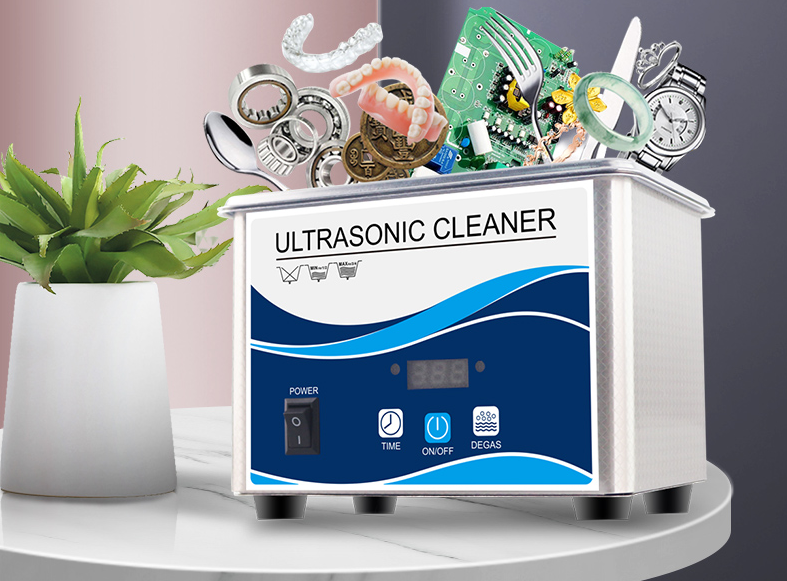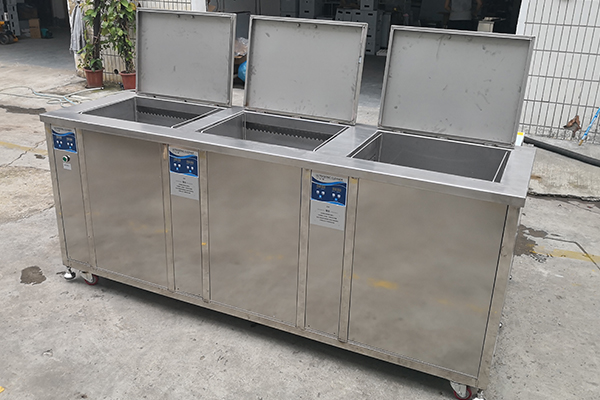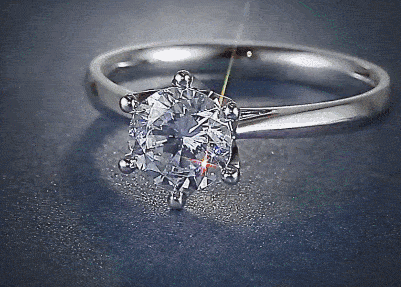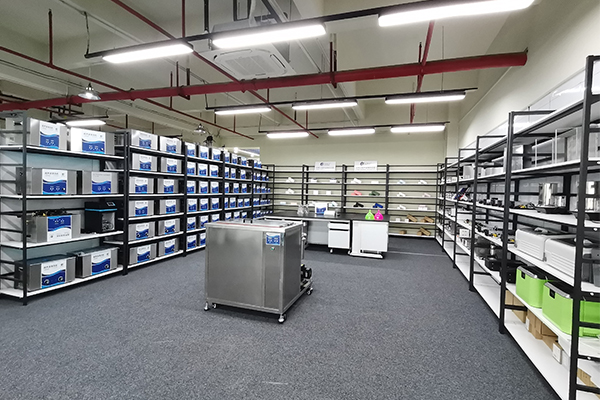Home ultrasonic cleaning machine ultrasonic power generally ranges from 35W-50W, but the commonly used ultrasonic frequency is 40KHz, the industry standard.
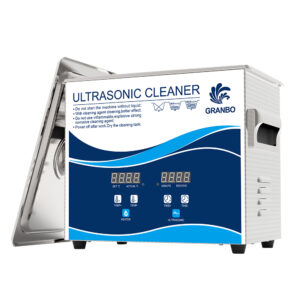
Ultrasonic frequency selection.
Cleaning hardware, machinery, automobile and motorcycle, compressor and other industries are mostly used in the cleaning of 28KHZ frequency cleaning machine.
Optical and optoelectronic cleaning, circuit board cleaning, etc. more than the use of 40KHZ frequency
High-frequency ultrasonic cleaning machine for computers, microelectronic components of fine cleaning, megahertz ultrasonic cleaning for integrated circuit chips, silicon wafers and wave film cleaning, can remove micron, submicron level dirt without any damage to the cleaning parts.
For some precision cleaning (such as liquid crystal body, semiconductor, etc.) on the application, the use of traditional frequency not only can not achieve the cleaning requirements, but also may cause damage to the workpiece. Typical example is about military electronic products, the industry has expressly disallowed the use of traditional frequency (20 ~ 30KHz) of the ultrasonic cleaning machine. In fact, in some Europe and the United States, Japan and other developed countries, has been through the selection of high-frequency cleaning machine (80KHz or more frequency, some have reached 200K or 400K) so that the problem has been solved.
The choice of ultrasonic power.
When the sound intensity increases, the radius of the cavitation bubble and the ratio of the starting radius increases, the cavitation intensity increases, that is, the higher the sound intensity, the stronger the cavitation, which is conducive to the role of ultrasonic cleaning. But not the greater the ultrasonic sound power is better, the sound intensity is too high, will produce a large number of useless bubbles, increased scattering attenuation, the formation of a sound barrier, while increasing the sound intensity will also increase the non-linear attenuation, which will weaken the cleaning effect away from the sound source place. Therefore, the effect of ultrasonic cleaning is not necessarily proportional to the added power and working time, sometimes with a small power to spend a long time also did not remove the dirt, while if the power reaches a certain value, it is possible to quickly remove the dirt.
If the ultrasonic power is too large, this time the cavitation strength in the liquid greatly increased, more precise parts will produce corrosion points, water point corrosion also increased, if the surface of the vibration plate has been subject to cavitation corrosion, strong power under the water bottom to produce cavitation corrosion more serious, so that the equipment life reduced, causing unnecessary losses, while cleaning the bottom of the cylinder vibration plate cavitation is also very serious, so that the cylinder life shortened.
But the ultrasonic cleaning power selection is small, spend a long time also did not remove the dirt, is also not desirable. Conventional ultrasonic cleaning in the industry, the standard type of ultrasonic cleaning machine from 100W to 1500W, how large the workpiece, in consideration of the premise of the cleaning beat, by the size of the ultrasonic cleaning tank to determine the ultrasonic power. In view of the current reverberant field sound intensity measurement technology is not mature enough, or use the power per unit area to design, generally a standard ultrasonic cleaning machine output power density mostly selected in 0.3 ~ 0.6 watts / cm2 or so, of course, this is only the conventional situation. Pulsed focus ultrasonic cleaning can be higher.

